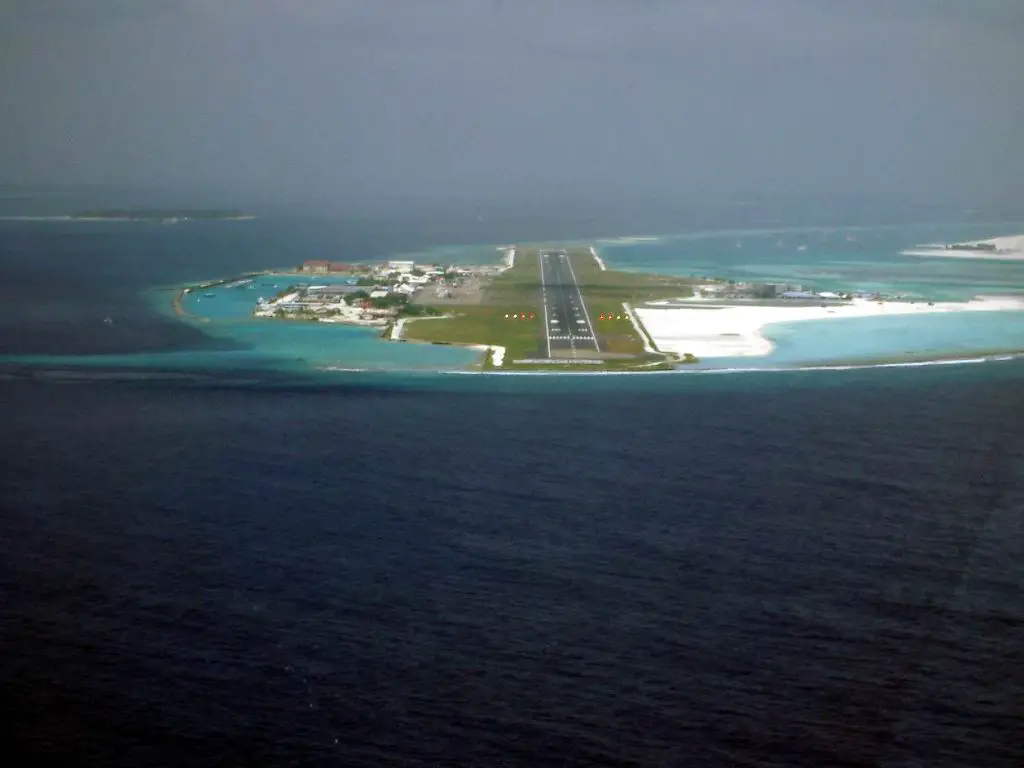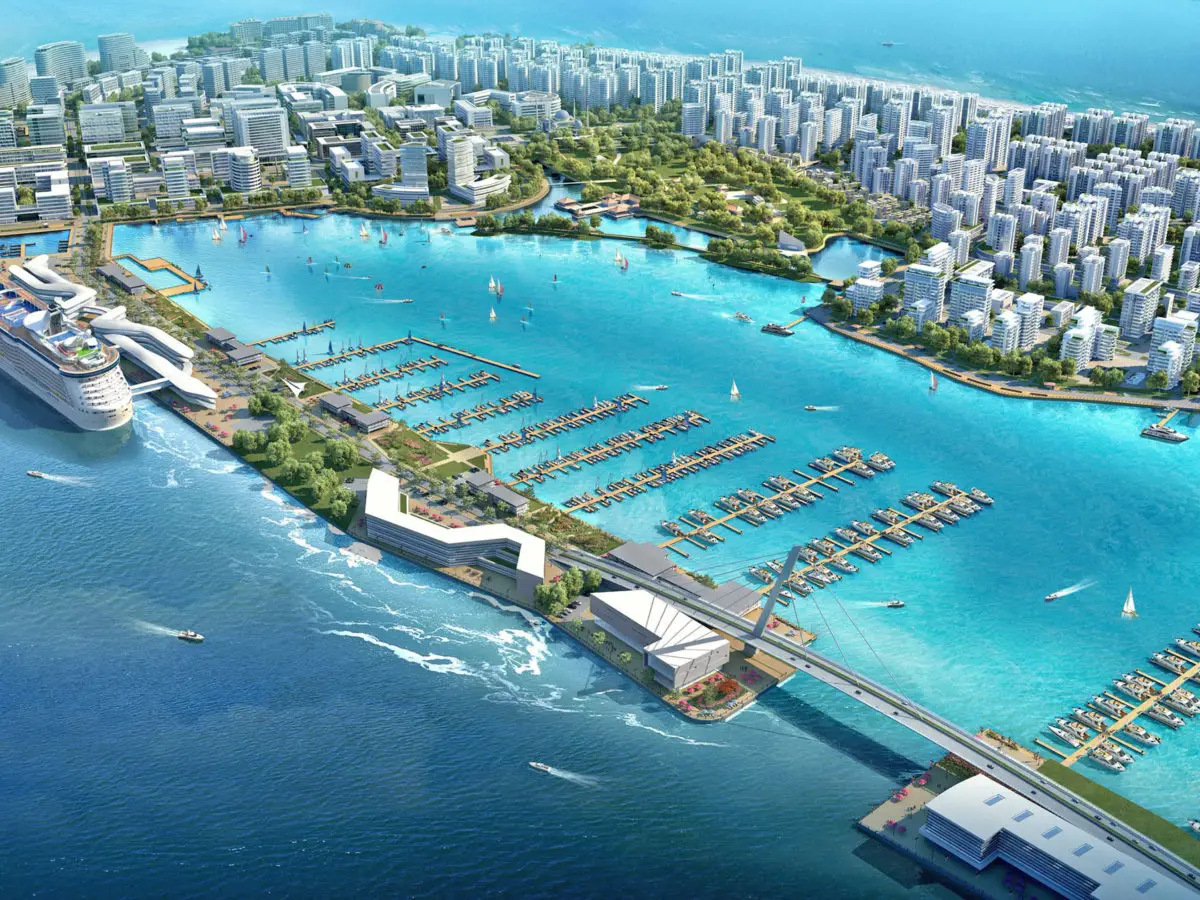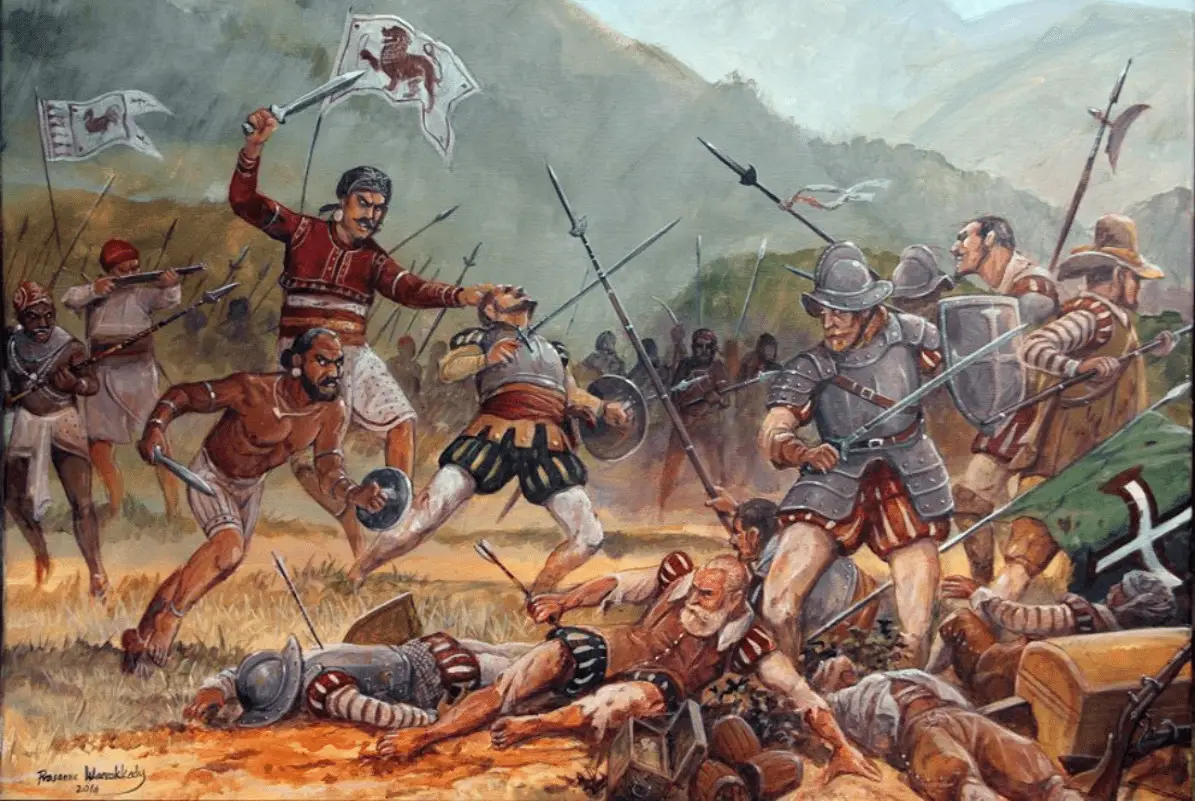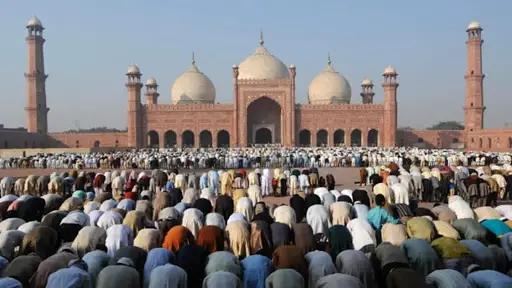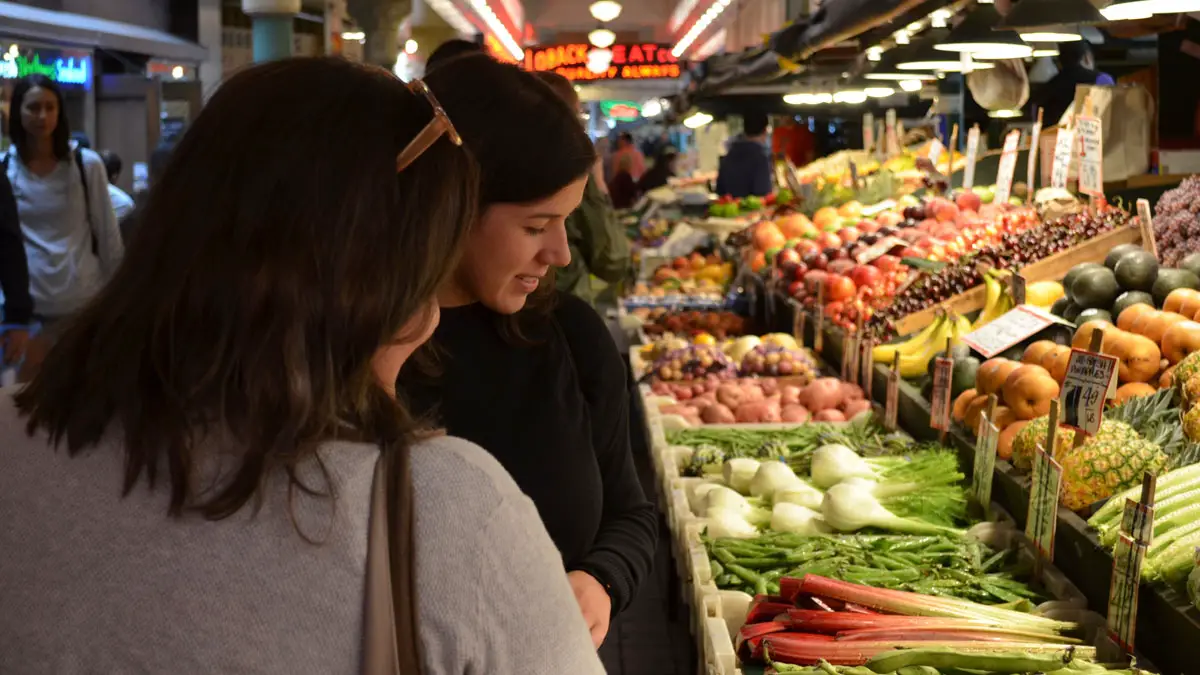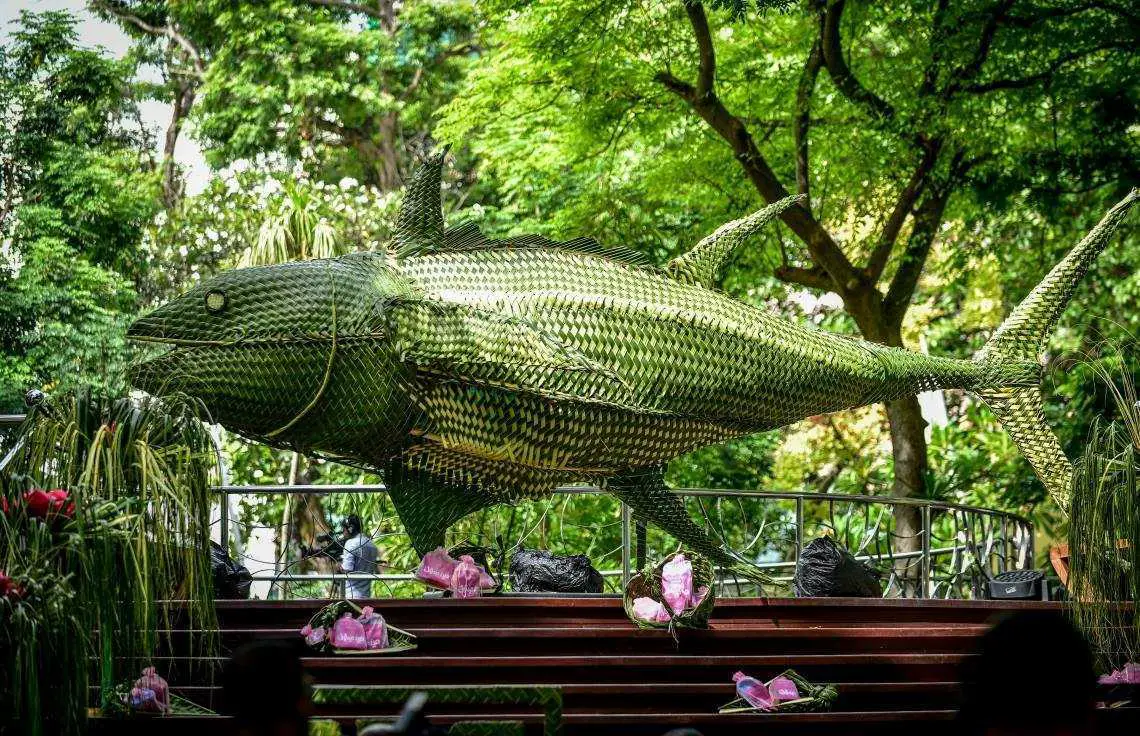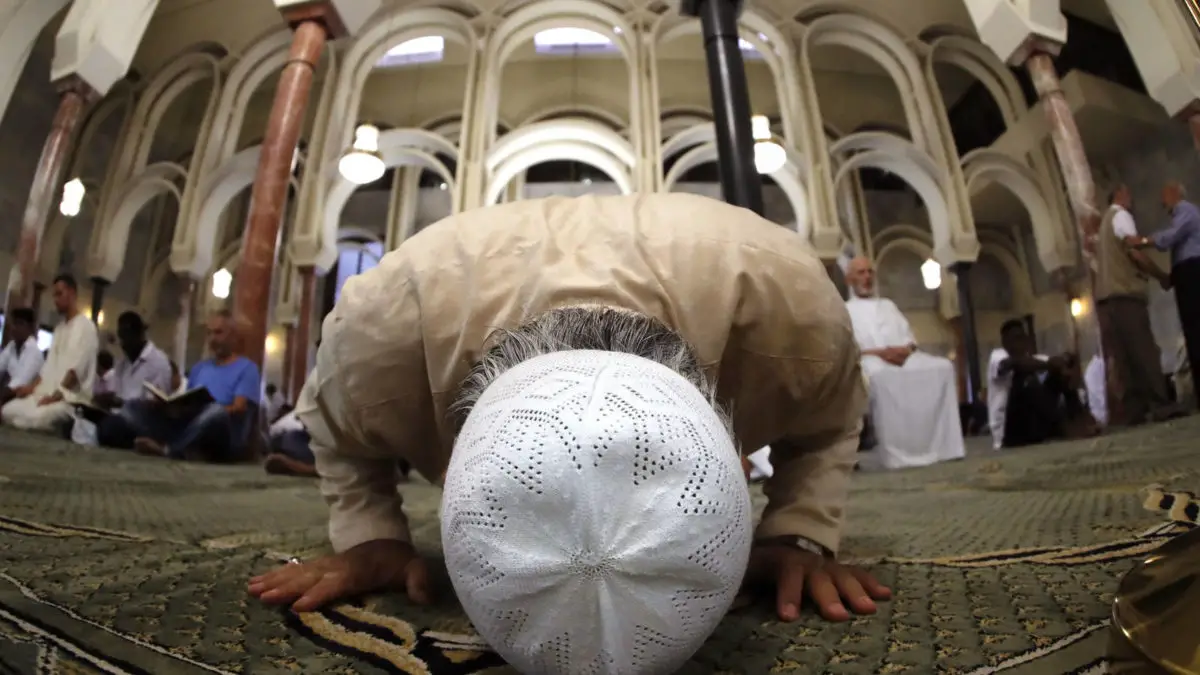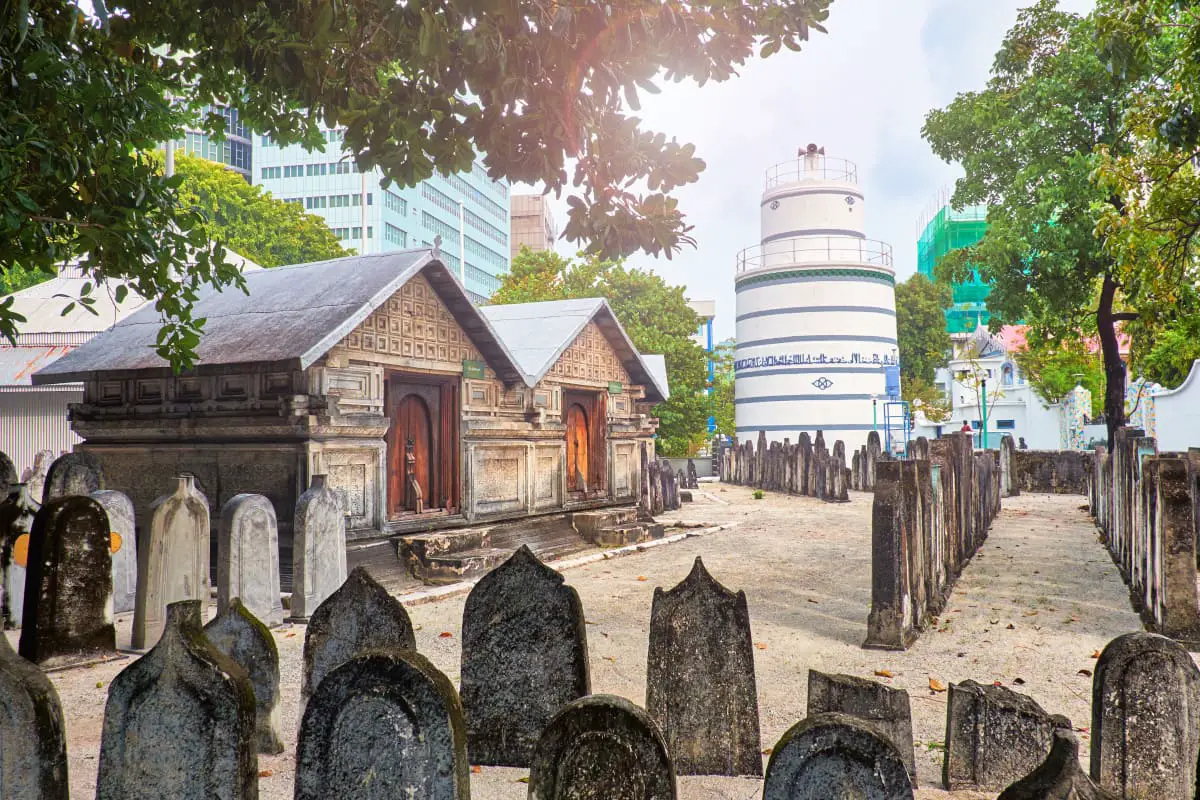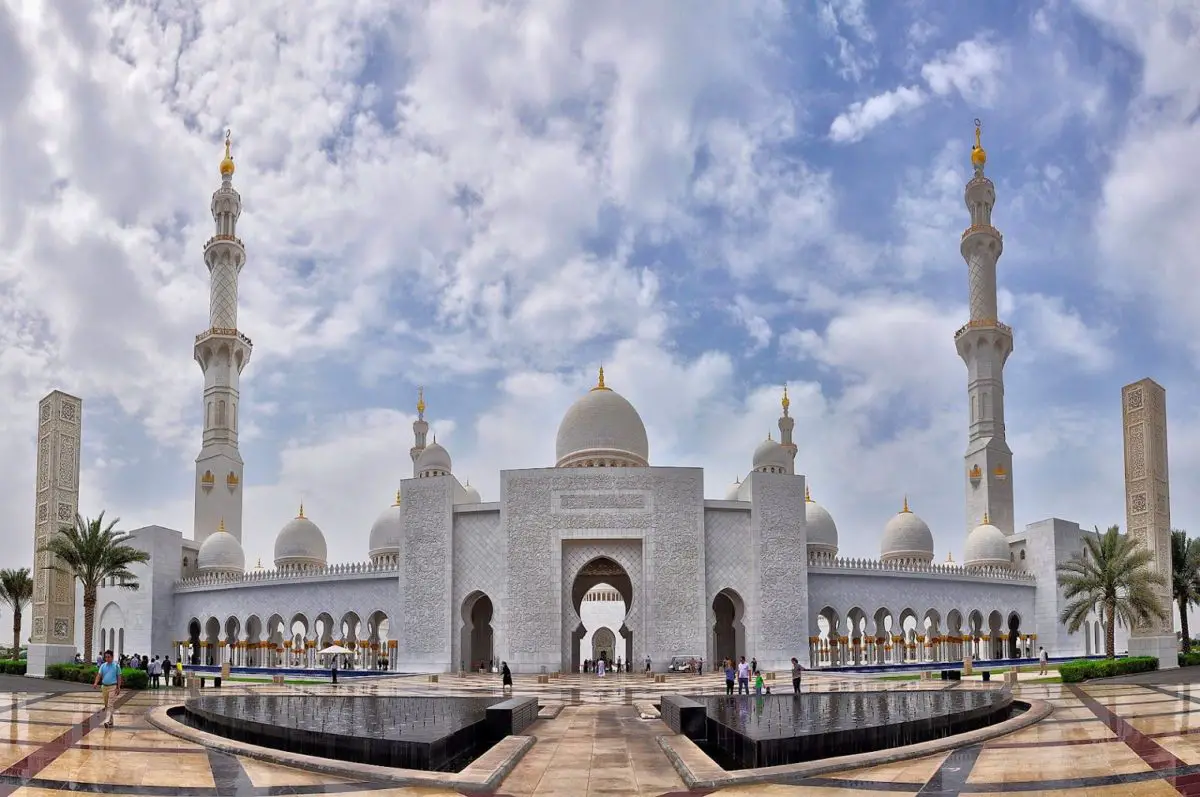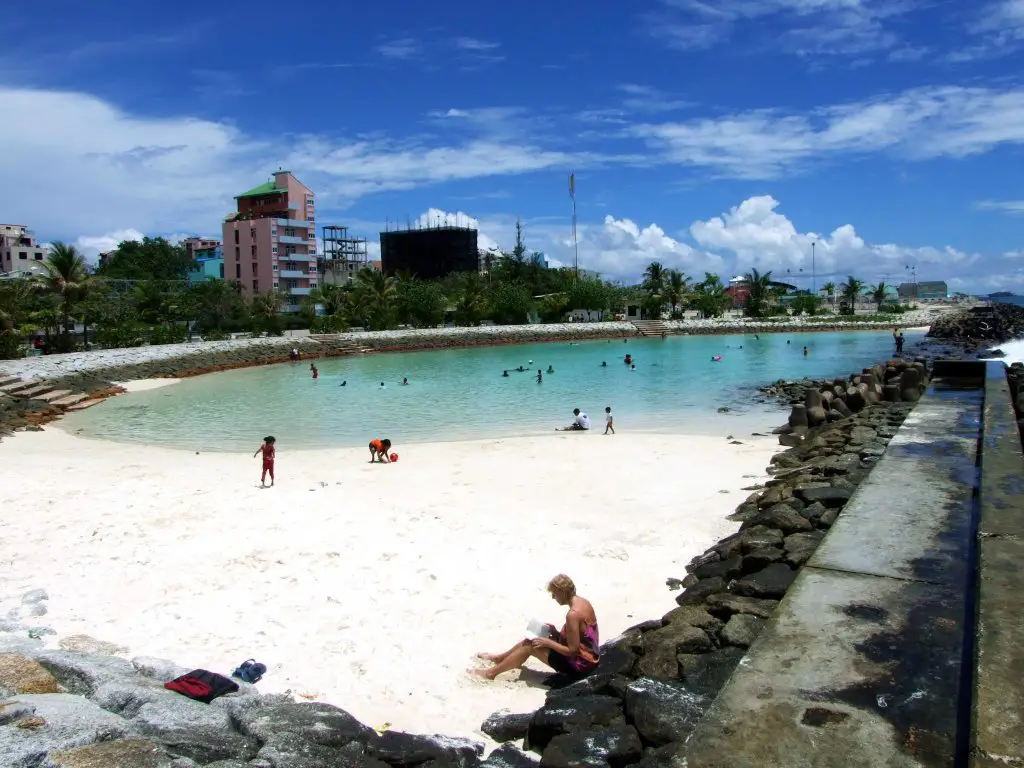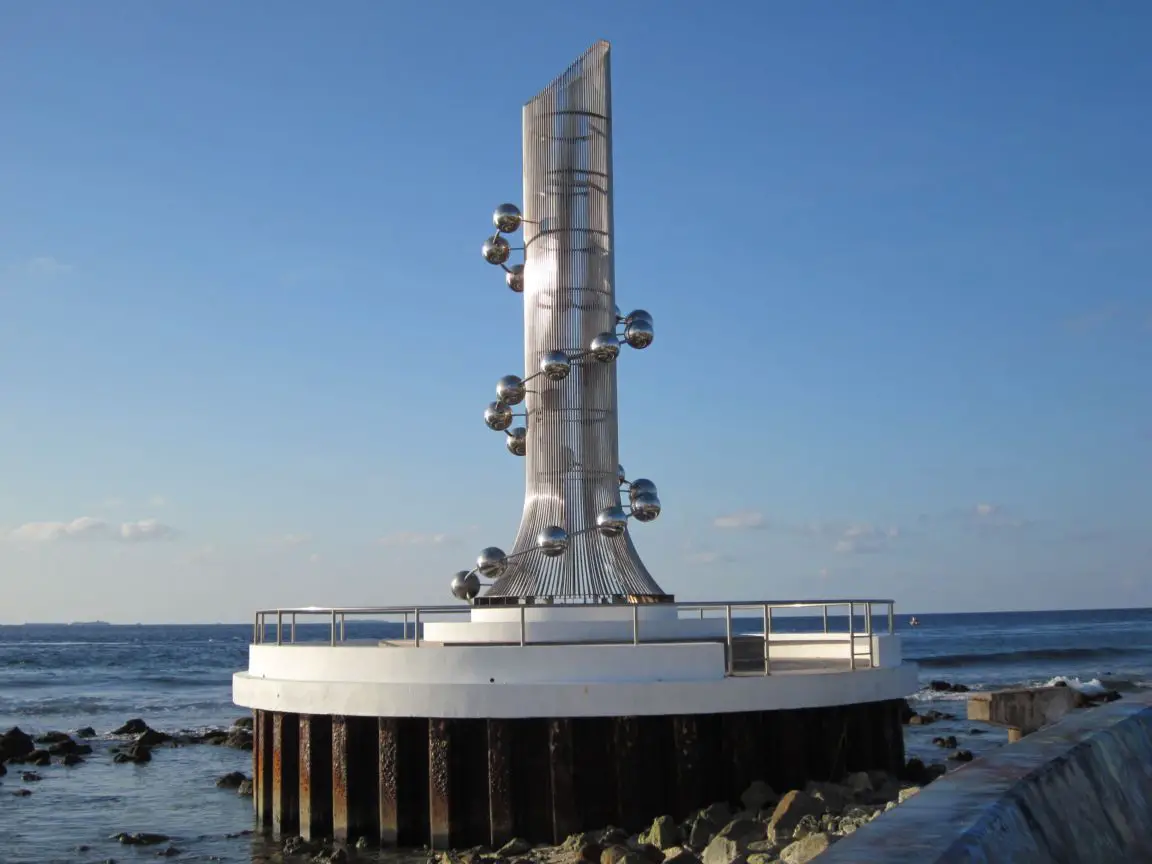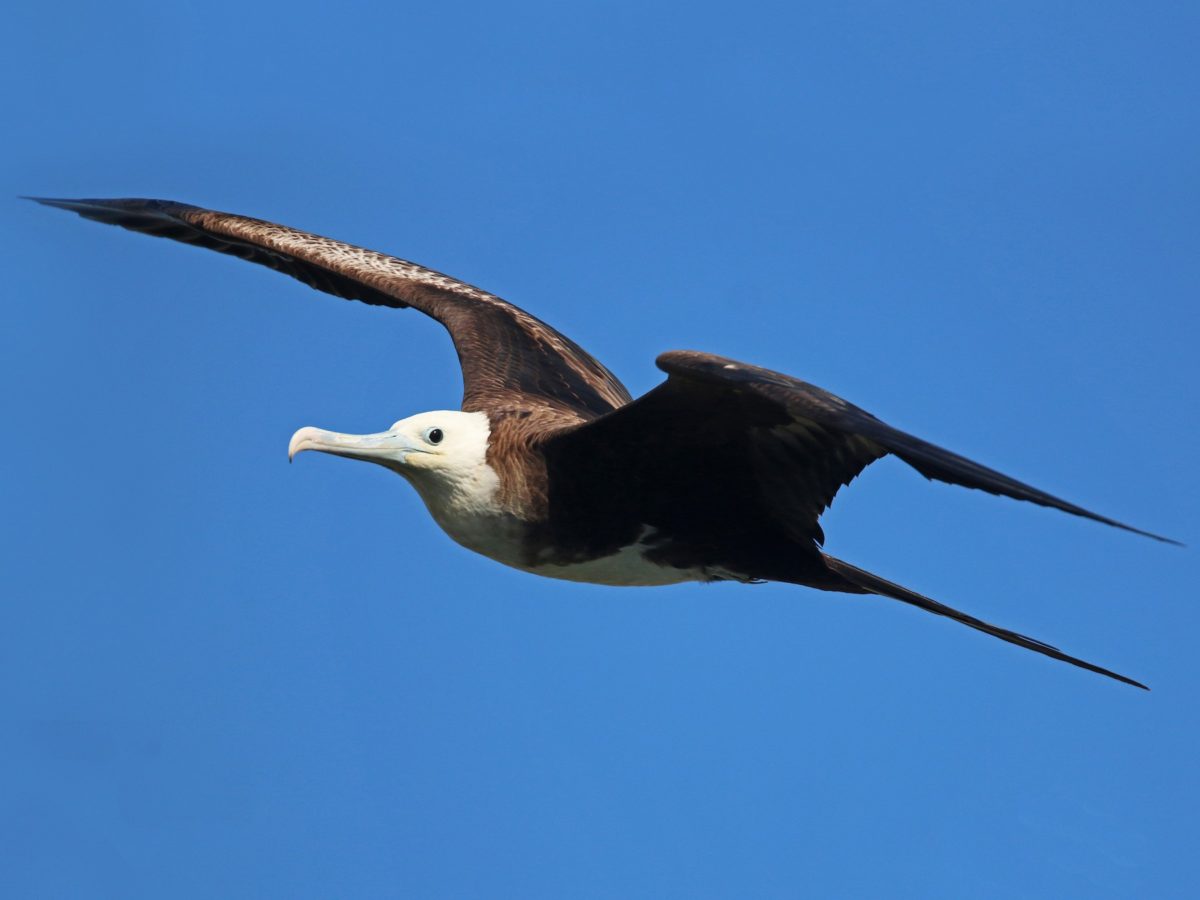We invite you to learn all about the island of Malé, the capital of the Maldives, the only city in the tropical country, which has made it a vibrant, bustling city full of history, culture and more! An interesting place to visit.
Indice De Contenido
Where is Malé Island located?
The island of Male is the capital of the Maldives in the Indian Ocean. The Maldives is a tropical country consisting of more than 20 adjoining atolls covering an area of approximately 298 square kilometres, including Kaaffu Atoll where the city of Male has developed, which is not only the capital of the Maldives but also the largest city in the archipelago.
Male Island is only 2km long and 1km wide and is fully developed. Compared to the other islands that make up the Maldives, Male Island is actually not very attractive for tourism as it is characterised as a chaotic, overcrowded city and is also the only city in the country.
Male is a city characterised by commercial, office and residential buildings, public and private health centres, commercial shops, restaurants and more; due to its size Male relies on other islands such as Hulhule to supplement the services it has to provide as the capital of the Maldives.
Hulhule is an island adjacent to the city of Male, where the international airport serving the city is located. In addition, an artificial island had to be built adjacent to Male to alleviate some of the crowding and chaos on the island.
Imagine: two kilometres long and one kilometre wide, the largest island in the Republic of the Maldives and its only city. It is the most densely populated city in the world. As the capital, it is the seat of the Maldivian government.
The city is divided into four areas or municipalities called Henveiru, Maafannu, Galolhu and Machangolhi. The city of Malé, as mentioned above, has had to expand outwards in order to meet the demand for services. As a result, Villingili Island, Hulhumalé, the artificial island, and Hulhule, the island that serves as the airport headquarters, are located outside Malé.
Although Male is not the main tourist destination when visiting the Maldives, there is no way of avoiding the populous city, and it is compulsory to fly through Male after arriving at Hulhule. Once there, it would be a waste of time and money not to visit and experience this incredible city.
The recommendation for anyone who has been to Malé is to take the Marina Drive boulevard to the junction with Chandani Magu Street as a reference point. In the city you can enjoy the famous colourful Singapore Bazaar market.
Visit the Monument Quarter, the Mulleeage Palace, which has beautiful colonial architecture and was built in the 20th century. Of course, the Sultan Mohammed Thaurufaanu Mosque, President Maumoon Gayoom’s Palace and the National Museum are just some of the places you can enjoy while visiting the city.
Take a stroll along the stunning waterfront promenade and sample the exquisite cuisine. By the time you finish this part of the walk, you will have forgotten that you are in the most chaotic and densely populated city in the world.
History of the island
Legend has it that the first person to reach the Maldives was a Sinhalese prince who was trapped by the sandbanks of an atoll and his boat ran aground. The prince was not alone; he was accompanied by his wife, the daughter of the king of Sri Lanka.
This prince ruled the region and was the first Sultan. The atoll was then besieged by pirates and other sultanates until 1968, when the Republic of the Maldives as we know it today was established.
But before this legend, history has it that these lands were inhabited from the 5th century BC by Buddhist communities, probably from Sri Lanka and southern India. In the mid-16th century, the Portuguese settled in Malé for 15 years and were then forcibly expelled.
In the 17th century, the island of Malé was a sultanate under the protection of the Dutch government of Ceylon, what we know as Sri Lanka, and this protectorate lasted for many years, but was formalised in 1887. There were several attempts at democratisation, including a constitution, but the country reverted almost irreversibly to a sultanate.
It was not until 1965 that the Maldives gained independence from the British, three years after the new republic was born and the sultanate abolished. The date of independence was set at 26 July 1965, when the last British troops left the islands, although the sultanate was abolished three years later.
Today, there is a democratic government elected by a vote of the people of the Maldives, in which the President is elected. The elected president cannot serve more than 2 consecutive 5-year terms. There is a vice-president and the highest judicial authority is a Supreme Court.
In the country of the Maldives, and therefore in the city of Malé, the official religion is Islam, and non-Muslims are not recognised as citizens. Islam replaced Buddhism, the original religion of the islands, and there are written sources that Buddhist monks were executed in order to establish Islam on all the islands of the Maldives.
Things to do on the island of Malé
It is a really interesting city, it has a great history of conquests, sultanates and independence, which can be seen as we walk through its streets, stumbling on evidence of its past at almost every step. It is true that it is a somewhat chaotic city because it is densely populated and its geography does not allow for further growth, which is why it has to expand to other islands.
But a visit to Malé is definitely a great experience. The mix of cultures, a language that is a mixture of Arabic, English, Hindi, Urdu and Sinhalese is just a taste of what it’s like to be welcomed into this amazing city.
We will find the beautiful mosques that have been built around the city as a symbol of the religion that reigns in the country, the most important of which is Hukuru Miskiiy because it is the tomb of Ibu of Morocco, the man responsible for converting the islands to Islam.
Walking through the market or bazaar is an unforgettable experience where an explosion of colours, smells, sounds, languages, will activate our senses to a level we have never known before, it is certainly something we have never experienced before. A stroll through the Sultan’s Park will allow us to recover a little and bring us back to a calmer state after the walk through the market, you will surely want to recover and assimilate the experience.
A visit to the National Museum can help you get a sense of the history of the city and the Maldives before Islam, during and after the Sultanates. But don’t think it’s all about the city, if you’re the kind of person who needs peace and quiet, you can also find it in Malé, it’s in the city where you can look for a tour or excursion and enjoy the aquatic life of the Maldives.
And if you want to take a break, the city has created a space where you can relax and enjoy the sea and the sand, as it has built an artificial beach that allows us a moment of relaxation to walk, enjoy a book or simply distract us watching the children enjoy this space.
You are also more than welcome to sample the local gastronomy, this is possible even in the chaotic city of Malé and discover the good and authentic curry. If you want to stay in the city and enjoy the sea, do not forget that the city has an artificial beach, do not compare it with the rest of the islands of the Maldives, because there is no comparison, but it serves the purpose.
Fish Market
A visit to the Mercado del Pescado can be a unique experience and you should be prepared for a somewhat disorganised, crowded and, for some, untidy market. If you are a scrupulous and sensitive person, we advise you not to visit. But we also warn you that if you do not visit the Fish Market, you will be missing one of the best places in this amazing city.
You will certainly not find a place like it anywhere else. The chaos of the products on offer is what makes it so attractive. It’s also a chance to see species you won’t find anywhere else. In this market you will see the arrival of the fish brought by the fishermen, fresh from the sea, as fresh as it gets. It is quite an experience to see how they clean the fish, the art of gutting and the variety, they are all a novelty.
Local market
The local market on the island of Malé is another must-see while in this incredibly populated city. The market is as chaotic as the city, but that’s as it should be, the amount and variety of goods is overwhelming.
Vendors are set up in makeshift places, on tablecloths that they throw on the floor to display their wares, and also in formal stalls. All these ways of displaying their wares give the place a unique personality. It is very close to the Mercado del Pescado. All you have to do is open the door and enjoy the experience, full of colours and smells.
Sultan Park
Another must-see when visiting Male is Sultan Park, which houses the National Museum, a place where tourists can learn about the history of the Maldives.
However, an added benefit of visiting Sultan Park is to enjoy the locals who gather in groups and have a good time chatting, the children enjoy the place and play, and the young people meet and have a good time too. It is a place that allows us to meet, it even allows us to pass unnoticed. It is a really beautiful place that you should not miss and enjoy.
Islamic centre and mosques
The Islamic religion is the one that shapes the life in Malé and all the Maldivian islands, therefore in the city we can find several mosques scattered around the city. The residents of Malé accept this religion and those who adopt another religion are not recognised as citizens of the Maldives. The importance of Islam shapes the daily lives of Maldivians.
Mosques are the place to go to pray, although these spaces have always served a variety of functions, with Muslims meeting, educating and socialising. Not unlike other mosques around the world, the seating faces Mecca.
The state of the Maldives operates under Islamic law, and Friday is the traditional day for the Great Prayer, so all shops and businesses in the city close at 11am, as well as for the daily call to prayer, which is observed throughout the city. There are over thirty mosques in Malé.
Old Friday Mosque
The Old Friday Mosque is the oldest mosque not only in Malé but in the Maldives and was built in 1656. It is made of coral stone. It has beautiful and unique decorations and inlays that make this mosque an extraordinary work of art.
To visit and enter the ancient mosque, you must apply for a special permit issued by the Ministry of Islamic Affairs. You may find this bureaucratic and a waste of time, but it is worth it as you will not see another mosque like it.
It is important to remember that being a tourist does not give you the right to break customs or disregard their rules, so whenever you visit a religious site it is best to respect the religion of the place you are visiting.
This will allow us not only to get to know their customs, but also to really understand and live them. During our visit to this mosque, we will have the opportunity to walk through the cemetery, where we will be able to tell by the different shapes and inscriptions on the tombstones which are the tombstones of the women, which are the tombstones of the men and which are the tombstones of the sultans.
Of course, we will point out the differences: the women’s gravestones have a rounded shape, the men’s have a pointed shape, while the sultans’ gravestones have their inscriptions in gold letters.
Grand Friday Mosque
The Grand Friday Mosque was built in the mid-1980s with funding from several Gulf states. It is a majestic white building topped with a golden dome that can be seen from several parts of the city. It is a must-see landmark.
The mosque has a conference hall, training facilities and also a beautiful library that is part of the building. It is the largest mosque in the city and is made of marble. It can be visited from 9am to 5pm, but always remember to be properly dressed.
Malé artificial beach
As we mentioned before, Malé is located on the atoll called Kaaffu, as we know the structure of an atoll, it is a land surrounded by water, therefore it has contact with the sea in all its surface, however, the atoll of Kaaffu, was totally urbanised, we can say that the city of Malé, took possession of all the spaces of the atoll.
So much so that the city built an artificial beach in the city of Malé. However, although it was built with the intention of offering a little of the natural beauty of the Maldives, you can’t swim in a bikini, so you have to swim in a T-shirt and shorts, and let’s not forget that they are Muslims.
The beach for visitors is a great place to walk on the sand, take off your shoes and cool off from the hot sun. It’s also a great place to watch the sunset. Located next to the Henveiru Adu Park, it is very well situated and therefore very busy. It is not much frequented by locals, but you will always find people enjoying the place.
Characteristics
The atoll was originally an area of white sandy beaches and turquoise waters. When describing the characteristics of the Maldivian islands, it is necessary to talk about palm trees, coral reefs and colourful fish.
These beautiful islands lie in the Indian Ocean. But Malé has developed into a vibrant city which, as we have seen throughout this article, offers many other activities and serves as a gateway to the other islands of the archipelago if you are looking for a holiday of beaches, sun and tranquillity. However, as we said, you can’t miss out on all that Malé has to offer its visitors, it is a unique city in its own way.
When you see an aerial view of the city, it’s surprising to see that the atoll has actually been hidden by urban development. With a population of more than 150,000, it has recovered from the 2004 tsunami that killed more than a hundred people, and to remember them, a monument has been erected to honour the dead and to remind us that the sea is their ally and sometimes a great enemy. But Malé has risen and moved on.
Climate
The island of Malé has a warm climate with short, hot summers with high temperatures and cloudy weather, while the long winters are equally warm and windy. Average temperatures range from 26 to 31 degrees Celsius.
Flora and Fauna
The fauna and flora associated with the atoll where the city of Malé is located includes typical coral reef fauna including lion fish, hawksbill turtles, moray eels, the graceful trumpet fish and, in deeper waters, friendly dolphins.
The waters of the Maldives are home to the impressive whale shark and the fearsome black tip shark in the atolls around the city of Malé. In fact, there is a great diversity of species associated with the aquatic fauna. The flora includes coconut palms, breadfruit trees and banana trees.
From the city, if we approach the port area, we can identify the associated bird fauna such as bugle birds, grey herons and the beautiful frigate birds of elegant flight, while in the city we can be surprised by the number of pigeons that we can see in recreational areas such as the Sultan Park. The southern islands are said to have allochthonous species such as bamboo and eucalyptus.
If you have found this article to be of interest, we invite you to continue reading by clicking on the links below:
- Underwater volcanoes
- Self-sufficient islands
- Underwater caves


